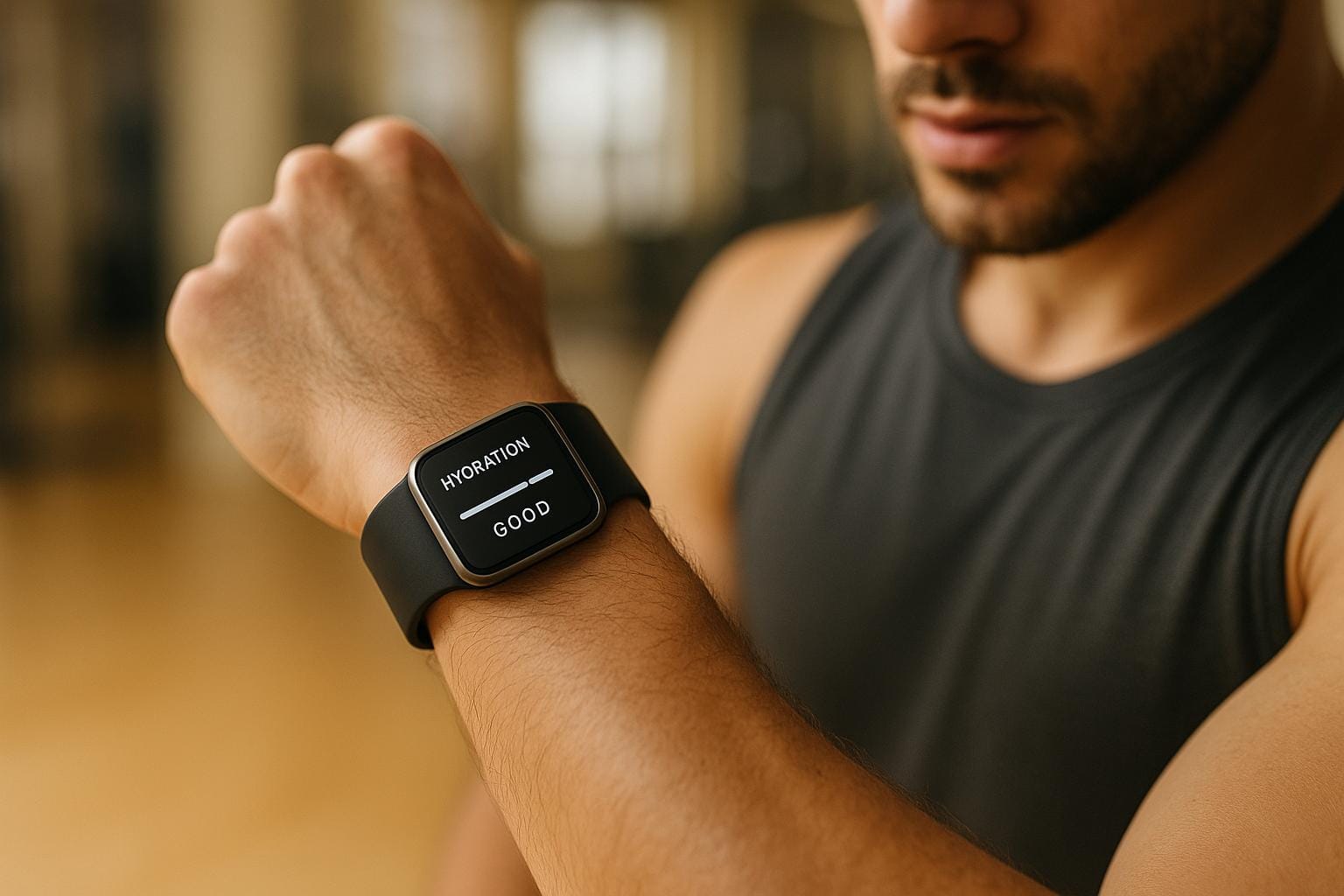Overtraining Syndrome (OTS) is a condition where athletes push their bodies too hard without sufficient recovery, leading to physical, hormonal, and mental disruptions. Symptoms include fatigue, mood swings, and hormonal imbalances, and it can take weeks or months to recover. Stress biomarkers like cortisol, ACTH, and testosterone are critical for identifying OTS early and managing it effectively. While these biomarkers provide objective data, diagnosis requires multiple tests over time due to individual variability and the complex nature of OTS.
Key takeaways:
- OTS symptoms: Fatigue, depression, insomnia, irritability, and hormonal changes.
- Stress biomarkers: Cortisol and ACTH responses are often reduced in OTS.
- Diagnosis challenges: Requires dynamic tests and baseline comparisons for accuracy.
- Recovery strategies: Biomarker monitoring helps tailor training and recovery plans.
OTS research is moving toward personalized approaches, combining biomarker data with psychological and performance evaluations to improve detection and recovery methods.
Main Stress Biomarkers in Overtraining Syndrome
Cortisol and ACTH
Cortisol and adrenocorticotropic hormone (ACTH) play a central role in the body's stress response, particularly during exercise. These hormones are released as part of the hypothalamic-pituitary-adrenal (HPA) axis activation, especially during moderate to intense physical activity.
For athletes in good health, exercise typically increases ACTH and cortisol levels, signaling an adaptive stress response. However, in cases of overtraining, this pattern shifts. During the early stages of overtraining, known as the overreaching phase, cortisol levels show a reduced response, while ACTH levels remain elevated. As overtraining syndrome progresses, the response of both ACTH and cortisol diminishes significantly.
Research supports this: a study observed a notable drop in cortisol levels during a 30-minute high-intensity cycling test after just 11 days of intensified training. This reduced cortisol response might be the body’s way of protecting itself from excessive cortisol exposure. Chronic stress can lead to cortisol resistance, potentially linked to adrenal gland desensitization or dysfunction in the hypothalamic and pituitary regions.
While cortisol and ACTH are pivotal, overtraining also disrupts other hormonal systems.
Other Hormone Biomarkers
Overtraining syndrome affects the hypothalamic-pituitary-gonadal (HPG) axis, leading to noticeable changes in the regulation of reproductive and growth hormones.
Research Findings and Biomarker Patterns in Overtraining Syndrome
Changes in Cortisol and ACTH Responses
Studies examining cortisol and ACTH levels during exercise reveal important neuroendocrine shifts in athletes experiencing overtraining syndrome (OTS). In these cases, athletes often show a reduced cortisol response, which is thought to act as a protective mechanism against prolonged hormone exposure. Initially, the body compensates for reduced adrenal sensitivity by increasing ACTH production, but over time, both cortisol and ACTH levels tend to drop.
Multi-Phase Models of OTS
Research on hormonal changes has led to the development of multi-phase models to differentiate between acute and chronic responses to overtraining. These models suggest that intense training, especially when combined with life stressors, can disrupt the body’s ability to adapt to physical demands. However, the effects vary significantly between individuals, emphasizing the importance of personalized monitoring and assessment.
Daily Rhythms and Biomarker Changes
Timing plays a critical role in evaluating biomarkers, as OTS often disrupts the natural circadian rhythms of stress hormones. Athletes with OTS frequently experience irregular cortisol patterns due to impaired adrenal sensitivity and dysfunction within the hypothalamic-pituitary-adrenal (HPA) axis.
In competitive environments, unique stress response patterns have been observed. For example, during swimming competitions, successful athletes typically show an increase in cortisol levels during finals, whereas underperforming athletes display a decline. Similar opposing trends have been noted in salivary α-amylase activity. These findings suggest that single-point biomarker measurements may fail to capture the dynamic changes that occur throughout the day. Instead, taking multiple measurements at different times can provide a clearer picture of an athlete's stress response.
These dynamic shifts highlight the importance of multi-point assessments for tailoring recovery strategies. By understanding how daily rhythms are disrupted, athletes and coaches can develop more effective training and recovery plans. This approach requires attention to both the absolute levels of stress biomarkers and their timing, ensuring strategies are customized to individual needs.
This article is for informational purposes only and is not intended as medical advice. Please consult a healthcare professional before starting any new fitness or wellness routine.
Diagnosis Methods and Practical Uses
Current Diagnosis Tools for OTS
Diagnosing overtraining syndrome (OTS) is no simple task - it requires a well-rounded approach that combines physical and psychological assessments. Healthcare professionals typically rely on a mix of biomarker testing, symptom tracking, and evaluations of psychological stress to paint a full picture of an athlete's condition. A key part of this process is establishing baseline measurements during the off-season, when athletes are rested and in peak health. These baseline numbers act as a benchmark, making it easier to spot potential warning signs of OTS, such as measurable drops in performance (like reduced power output or slower recovery times) and persistent fatigue. Together, these tools and observations create a detailed framework for understanding the role and limits of stress biomarkers in diagnosing OTS.
Benefits and Limits of Stress Biomarkers
Stress biomarkers bring a lot to the table by offering objective, measurable data that can help eliminate guesswork in evaluating an athlete's condition. For example, cortisol levels can reveal disruptions in the hypothalamic-pituitary-adrenal (HPA) axis before symptoms become severe, while testosterone levels can indicate changes in anabolic capacity.
That said, there are challenges. Athletes often have varying "normal" ranges, making it tricky to interpret results across individuals. Frequent testing can also be expensive, and some biomarkers require specialized labs, which can delay getting results. Adding to the complexity, single-point tests rarely capture the dynamic shifts in stress responses, so multiple tests over time are often necessary.
| Biomarker | Benefits | Limitations |
|---|---|---|
| Cortisol | Noninvasive; tracks HPA status | High individual variability; sensitive to sleep and diet |
| Testosterone | Measures anabolic capacity | Fluctuates with training load; gender differences |
| ACTH | Tracks pituitary response | Requires blood draw; costly |
| Immune markers | Identifies infection risk | Complex to interpret; requires multiple markers |
Adding Biomarker Monitoring to Recovery Plans
To make biomarker data truly useful, it needs to be integrated thoughtfully into recovery plans. This means scheduling tests to align with the athlete's training cycles - before and after intense training weeks, after performance tests, or during recovery from injuries. For athletes showing signs of fatigue, noticeable performance declines, or injuries, additional testing outside routine schedules may be needed to capture critical changes in their physiological state.
When combined with workload metrics and psychological evaluations, biomarker data becomes a powerful tool. It helps guide decisions about training adjustments, rest periods, nutrition tweaks, or other recovery strategies. For instance, muscle status markers can be tracked every 4–6 weeks under consistent conditions to monitor long-term changes. Hydration levels might be checked daily during high-stress training periods, while micronutrient levels can be tested periodically to catch developing deficiencies.
In short, assessing an athlete's health and performance requires a dynamic, trend-focused approach to biomarker analysis - one that prioritizes patterns over isolated results.
This article is for informational purposes only and is not intended as medical advice. Please consult a healthcare professional before starting any new fitness or wellness routine.
Summary and Future Directions
Main Findings from Current Research
The latest research paints a detailed picture of overtraining syndrome, a condition affecting a significant portion of athletes. Studies show that between 30% and 60% of athletes display signs of overtraining. Among elite distance runners, 64% of women and 66% of men report experiencing staleness at some point in their careers, underscoring how common this issue is across various sports disciplines.
Diagnosing overtraining syndrome remains a challenge, as no single biomarker can confirm its presence. The condition impacts multiple systems in the body, requiring a broad and integrated approach to detection and management. Key players include the hypothalamic-pituitary-adrenal (HPA) axis and the autonomic nervous system, both of which regulate the body’s stress responses. Athletes with overtraining syndrome often show blunted cortisol responses and lower levels of anabolic hormones during exercise stress tests, adding to the complexity of diagnosis. Tools like the EROS-CLINICAL, EROS-SIMPLIFIED, and EROS-COMPLETE scoring systems are emerging as valuable resources, combining hormonal, neurotransmitter, metabolite, and psychological data to provide a more comprehensive diagnostic framework. These findings emphasize the need for personalized and innovative diagnostic strategies.
Future Research and New Developments
The future of overtraining syndrome research leans toward personalized diagnostic techniques. Current methods lack definitive biochemical markers, so scientists are prioritizing long-term studies to better understand the condition. For example, tracking bone mineral density, bone turnover markers, and fracture risks over time could offer crucial insights, especially since stress fractures account for 10–20% of sports medicine injuries, and up to 30% of young athletes may be affected by overtraining syndrome.
Upcoming research is expected to integrate multiple biomarkers with cutting-edge technology, aiming to improve diagnostic precision and provide earlier intervention options. Additionally, there’s growing interest in tailoring interventions to match individual training responses, ensuring recovery strategies are as personalized as the diagnostic methods.
How Fitup Supports Wellness

Practical recovery strategies are vital for anyone aiming to balance fitness and performance, and Fitup bridges the gap between research and application. By translating scientific findings into actionable advice, Fitup helps you identify when your body needs rest and guides you in structuring a sustainable fitness plan.
Whether you're chasing personal records or simply staying active, understanding how your body reacts to stress is key to optimizing performance and protecting your health. Fitup’s evidence-based approach equips you with the tools to train smarter, recover better, and stay on track for the long haul.
This article is for informational purposes only and is not intended as medical advice. Please consult a healthcare professional before starting any new fitness or wellness routine.
Overtraining Syndrome | National Fellow Online Lecture Series
FAQs
What are the early signs of Overtraining Syndrome, and how can athletes detect it before it worsens?
Athletes can recognize the early warning signs of Overtraining Syndrome (OTS) by keeping an eye on both their physical and mental well-being. Some common red flags include feeling unusually fatigued, struggling with poor sleep, experiencing irritability or mood swings, dealing with prolonged muscle soreness, and even losing their appetite. These symptoms often suggest that the body is dealing with more stress than it can handle.
Keeping track of hormonal biomarkers can also offer valuable clues. For instance, elevated cortisol levels - often linked to stress - can be monitored through regular salivary tests that assess adrenal function or other stress markers. Spotting these signals early allows athletes to adjust their training routines and focus on recovery, reducing the risk of OTS becoming a more serious issue.
How do stress biomarkers like cortisol and ACTH help in identifying and managing Overtraining Syndrome?
Stress biomarkers like cortisol and ACTH are essential tools for identifying and managing Overtraining Syndrome (OTS). Cortisol, a hormone tied to the body’s stress response, often rises when the body experiences physical stress or fatigue. What makes this so valuable is that elevated cortisol levels can act as an early warning sign, even before obvious symptoms appear. This creates an opportunity for timely intervention to avoid more serious issues.
ACTH (adrenocorticotropic hormone), which regulates cortisol production, is another critical marker. Changes in ACTH levels can point to disruptions in the hypothalamic-pituitary-adrenal (HPA) axis - an imbalance frequently seen in overtrained athletes. By keeping an eye on these biomarkers, athletes and healthcare providers can catch overtraining early and create tailored recovery plans to maintain both performance and overall well-being.
How can athletes and coaches use biomarker data to prevent Overtraining Syndrome and improve recovery?
Athletes and coaches can use biomarker data - like cortisol levels and oxidative stress markers - to tailor training and recovery strategies to individual needs. Tracking these physiological indicators allows them to spot early signs of overtraining and make timely adjustments to workout intensity, volume, or recovery schedules.
By regularly evaluating biomarkers, they can make informed decisions to enhance performance, minimize the risk of injuries, and maintain overall well-being. This approach helps athletes stay at their best while avoiding the fatigue and stress linked to Overtraining Syndrome (OTS).












